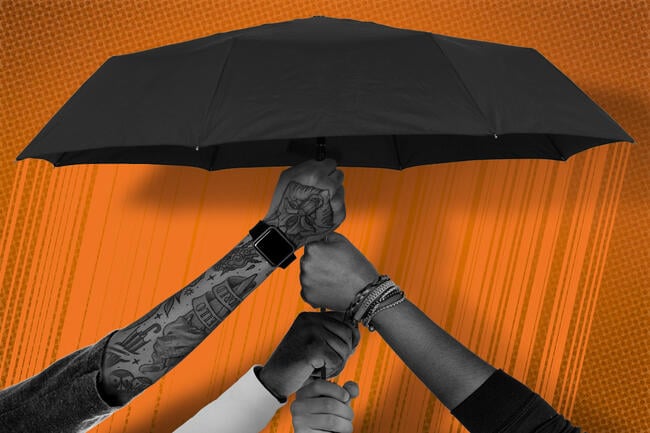You have /5 articles left.
Sign up for a free account or log in.

Some minority-serving institutions are defined by the makeup of their student bodies. Others are based on their historic missions.
Photo illustration by Justin Morrison/Inside Higher Ed | aluxum and Artico/iStock/Getty Images | rawpixel
Minority-serving institutions were thrust into the national spotlight last month when the state of Tennessee and the advocacy group Students for Fair Admissions filed a lawsuit challenging the federal criteria for Hispanic-serving institutions. The suit claims it’s discriminatory and unconstitutional for the federal government to use Latino student enrollment to determine eligibility for HSI grants.
The move shook minority-serving institution advocates who fear that an attack on one type of MSI doesn’t bode well for others. They also worry oversimplifications and misunderstandings about how different MSIs are defined make them more of a target.
“MSI” is an umbrella term that encompasses a wide range of institutions—including HSIs, historically Black colleges and Asian American and Native American Pacific Islander–serving institutions—which have some core characteristics in common. They’re federally designated to serve underrepresented students, have dedicated federal funding and tend to be underresourced, so they can ill afford a financial, or legal, hit. At least 700 federally designated MSIs serve upward of five million students.
But each also comes with its own history, federal funding structure and role in the U.S. higher education landscape. For instance, some types of MSIs, including HSIs, are enrollment-based. They earn their designation partly because they enroll a percentage of students from a certain racial or ethnic group and from low-income backgrounds, and they can lose their status if their student demographics change. These institutions are eligible to compete for designated federal grants.
Others, like historically Black colleges and tribal colleges, are defined by their historic missions. In general, Congress appropriates funding for them regardless of which students enroll, though they can also compete for specific grants from federal agencies.
The definitional differences among types of MSIs can sometimes get lost in the weeds. But those differences are likely to inform how each sector fares in a political moment when state and federal policymakers are increasingly averse to anything that smacks of diversity, equity and inclusion. As MSIs find themselves at the center of a controversial legal battle, here’s a breakdown of the different types of institutions.





